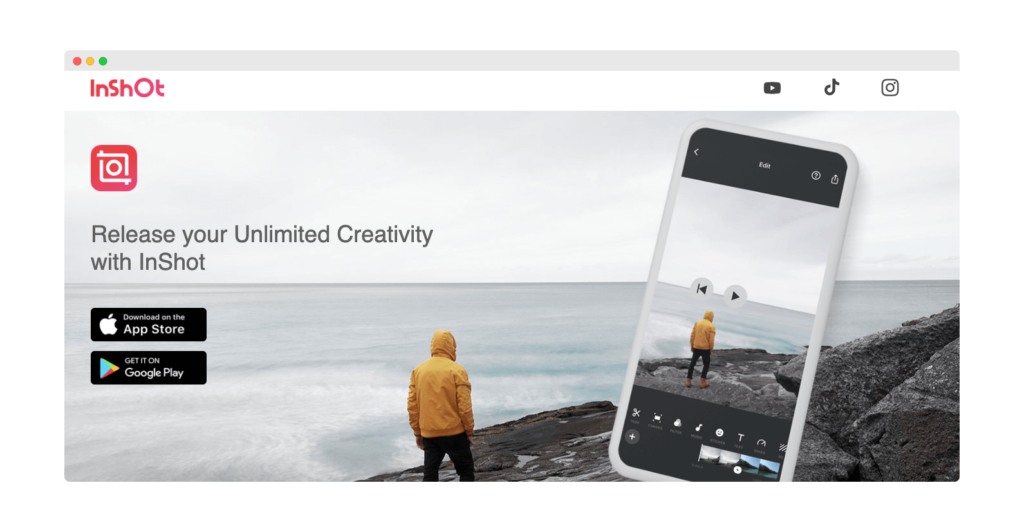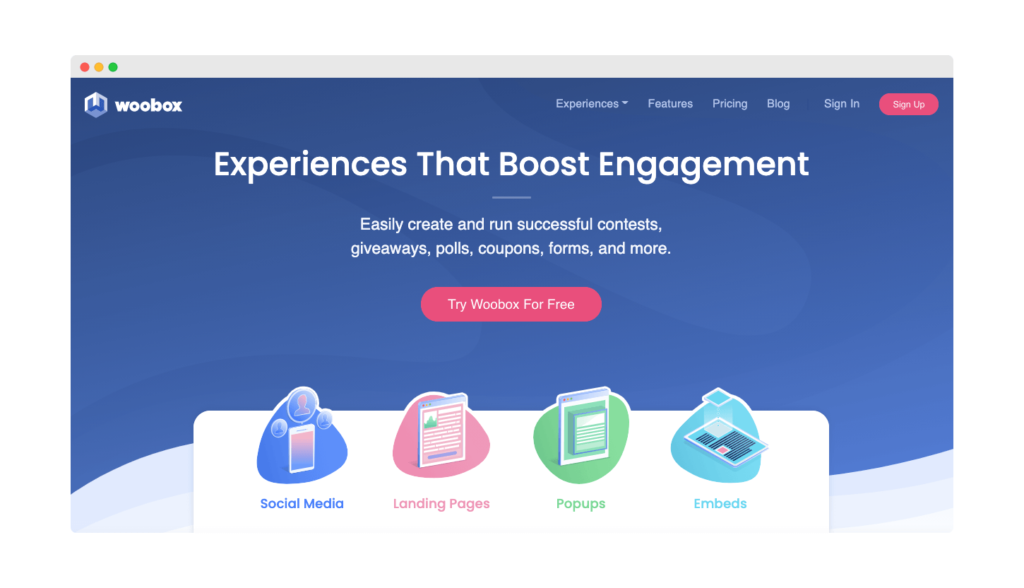Social media is more than just a trend; it’s the new marketing frontier. Building a successful social media team can be challenging, but with some strategic planning and proper staffing, you’ll be well on your way to creating an effective campaign.
Today, we’re here to tell you how to start building a solid social media marketing team, what factors to take into consideration when approaching this task, and what makes the social media management team a strong one.
3 steps to build a social media team
1. Define your social strategy and goals
It is essential that your social media team meets the organizational and social goals. Having these defined will make it easier for others inside and outside of the company to help to attain them.
Defining social strategies must be done based on what is best for the brand, not just to satisfy a particular marketing plan. If social networks are important now, but may not be in two years’ time, decide whether you want someone to focus on them right now.
Make sure everyone understands why social platforms matter by providing examples of how each would fit into their daily workflows. Everyone can then make better decisions about which networks need more attention.
Be careful! Don’t ignore the value of things like social customer care and social listening, as these are often overlooked.
This is the stage when you:
- set up the list of channels
- set up smart KPIs
- set up OKRs (if needed)

2. Assess available resources and capabilities within your organization
You should assess your available resources before you start hiring people for your social media team.
Create roles instead of positions: use people’s skill sets rather than their title, e.g. having one person create social media content while another handles paid/earned social posts.*
The creation of social content doesn’t have to be done in-house all the time: there are lots of agencies and freelancers out there who can offer supplementary or even full services. Try to think about how they might complement existing resources in order to figure out what would work best in your team.
Large brands, for instance, frequently request social media management. Agency fees can be extremely costly, so it may be better to manage social accounts in-house with personnel who are already in role and experienced with your brand.
Consider if there is an internal capability within your organization to work on this project, before hiring an agency for social media content creation. Maybe someone else already offers similar services or knows how to produce great visuals, for example, so you may not need a separate service provider altogether!
A social media agency can work as an extension of an existing social media team, but of course, the latter must exist first. So, let’s move on to…
3. Build an internal social team, including core members and social partners
One of the most important first steps you need to think about is who should be included in your social media team. Do you need a full house straight away, or just a social media manager will do for now? This decision, of course, depends on many factors:
- Are you a brand, or an agency?
- How many profiles on social media do you manage?
- How often do you post?
- What kind of content do your social media profiles require?
- Do you run paid social media ads?

Keeping in mind that social is about teamwork, make sure everyone knows what their responsibilities are. This will prevent confusion when someone is doing something that should be done by another person or team (and vice versa). Although social media does not require a legally binding agreement, clear boundaries are necessary.
Remember that social media is always changing, so keep everyone informed of changes to social networks and trends to stay ahead of the game. When a team is behind on the latest updates, it isn’t much use having them around! Put in place processes for new members to learn about your current strategies.
Write down the social networks your organization uses, the volume of social media activity on each network, and how much time you have to dedicate towards social media.
To free up more time for existing employees, hire outside help if the core group has an insufficient volume of staff.
Recognize where you need help within the company by identifying what skill sets are available. By doing so, you can cultivate an internal social network of those who are familiar with one another’s work. People who are excellent at writing but struggle with design, for example, shouldn’t be assigned tasks that require them to visualize content! By knowing these things ahead of time, your social media team will be able to create social content more efficiently and much faster. It also opens the door to meaningful employee rewards and recognition, where individual strengths and contributions are acknowledged in ways that boost collaboration and team morale
Social media team roles: your deck of winning cards
♣ Ace: Head of social media
The head of social media usually oversees the entire project and is involved in all of the strategic aspects. Social media ROI is their responsibility, along with shaping the social media strategy and team.
Supervising the activities is one of the primary functions of the person in this role. In the area of social media, this individual verifies the quality, effectiveness, and profitability of all group activities.
In this role, the primary responsibility is ensuring the effectiveness of teamwork and client activities.
In conversations and strategies regarding projects involving social media, they should always be at the forefront. A good understanding of how everything works, as well as what’s going on in each team, is considered essential.
The head of social media also provides assistance to other team members if required, & provides regular reports on their actions. Additionally, they send notes and reports to the managing board or stakeholders.
♦ Kings: Social media managers/team leaders
An effective social media manager needs a wide range of social media skills. Among these can be the ability to execute social campaigns across multiple networks, write engaging social posts, research and analyze audience data, all while keeping a close eye on what your competitors are doing.
However, at least some of these tasks can be outsourced or delegated to other members of a social media marketing team, leaving managers with the space for managing people, reporting and optimizing the strategy.
Your social media manager should, of course, have a full grasp of both social channels and their ever-changing dynamics – this includes experience in both marketing and social media management as well as solid knowledge about current industry developments and social media marketing trends.
Team leaders oversee all aspects of campaign execution from planning and budgeting through post-campaign reporting and optimization efforts. A manager’s responsibilities often overlap with those of strategists, community managers and content creators but usually focus more tightly on managing other people than growing a large audience themselves.
Depending on each individual social media team, a social media manager can be a standalone position (a one-man-army and ultimately, a leader of this one-man department) or a person who comes in between the head of social media, and other members of the team.
Speaking of others: your social media team deck may get a little more crowded now.

♠♥ Queens & Jacks: Your army of specialists
And here’s the whole array of people and roles you can redistribute in your team.
Social media community managers/moderators
Community managers are social media marketers who focus on specific social networks and interact with audiences. They post, answer questions, reply to comments, and engage in conversations to build rapport among their friends and followers. They also often keep an eye on social media monitoring, reacting in real-time to whatever may be beneficial or harmful for a brand.
Social media content creators/graphic designers
Content creators produce social media posts, graphics, and other social marketing assets to engage with your audience.
Social media content creators play a really important role in a social media marketing team. They are responsible for finding the perfect content, curating it through social networks, optimizing posts to reach target audience, creating engaging captions or selecting witty replies from influencers.
Social media graphic designers
Social media graphic designers, as the name indicates, are in charge of all creative, visual assets for social media. They often use tools like Adobe Photoshop or Canva to design social images that are optimized for engagement on specific social networks. They are also involved in creating and executing brand books.
Social media strategists
Social strategists plan how you’ll execute campaigns across many social networks simultaneously and dictate the direction to follow. Strategists typically have a lot of experience executing social content creation projects while closely coordinating with teams responsible for paid advertising campaigns or other marketing activities.
Social media analysts
Social analytics experts monitor social data and use the analysis to inform your social marketing strategy. They may study social user demographics, track hashtags on Twitter or perform sentiment analysis of social posts to help measure the effectiveness of particular campaigns.
Social media advertisers
Social media advertisers are part of the social media marketing team who manage paid social advertising campaigns. Social advertisers use tools to create, monitor and optimize social ad campaigns across multiple social networks simultaneously while measuring campaign performance against specific goals including driving website traffic, promoting social engagement and generating sales.
Social brand advocates
A social advocate promotes your company through social channels, which can include: responding to customer complaints, or requests for information about products on social networks. Advocates might also share content from other brands they think customers should know about, with the goal of growing awareness around a product category, rather than promoting an individual business. Social marketers are typically hired by companies that already have some sort of existing social presence but want to expand into new markets or optimize campaigns more effectively. They’re often tasked with building new audiences across multiple platforms simultaneously, whilst making sure all existing fans remain engaged. Social marketers usually report directly to social team leaders or social strategists.
Do you need to have all these roles in your social media marketing team? No. It all depends on your industry, brand, budget, and capabilities, and it is not unlikely for one person to combine the duties of a few roles mentioned above.
Tools for social media teams
A few tools for social media automation will still be useful for even the most experienced social media marketers! See how your social media profiles can flourish when you combine amazing people with the use of great tools.
#1 Kontentino – your all-in-one social media management suite

Kontentino doesn’t take a day off, it won’t go on sick leave, it works 24/7, you don’t need to go through any recruitment processes; it can save a lot of your time while providing the highest efficiency.
Why should Kontentino be a major part of your social media team?
- Kontentino is like a friendly social media project manager who takes care of the whole social media management process. You can keep all your assets, posts, team members, and external collaborators in one, handy dashboard.
- With Kontentino, you can schedule social media posts across various platforms without the intervention of anyone in the team. It’s on autopilot.
- Kontentino allows you to analyze and generate reports on your performance, so you, or your team, can easily analyze it, without duplicating effort on the creation of analytical summaries.
- Collaboration is Kontentino’s middle name. With content approval features, comments, tags and labels, not only is remote collaboration made easier, but also the level of satisfaction for both your clients and the social media marketing team increases in no time.
#2 Easil for the quick design of social media creatives

For many social media creatives and templates, the graphic tools with which they were created are easily identifiable. Easil is a very good tool for creating social media content yet is less mainstream than many other available options!
Social media managers can access many interactive tools, integrations, and features with Easil. Visual content for social media can be created effortlessly by simply dragging and dropping images into the editor. Social media marketing teams will find quick and easy designing for all types of content useful, especially if they do not have many graphic designers to hand.
#3 Vyond for creating videos and animations

We all know that video makes the social media world go round, and with Vyond, creating animations is easy.
Vyand is a piece of video editing software that is easy to use for beginners and professionals alike. Anyone can create animations using the web app even if they don’t have knowledge of video or film concepts. Adding elements, effects, and music is easy, as is sharing your creations on social networks. There you have it!
#4 InShot Video Editor for Instagram Stories

Instagram Stories are overwhelmingly popular, so it’s hard for every social media marketing team to have a sufficiently compelling story or interesting design to stand out. This process is made much easier with InShot. This app for Instagram or Facebook stories lets you create stunning content for these formats in just a few clicks. With an intuitive interface, you can add text or graphic elements without needing to have any photo or video editing experience! This tool will be a great choice if your social media team posts a lot of Instagram stories.
#5 Woobox for outside-the-box content creation

Bored with normal photo content? Tired of making videos? Your social media marketing team deserves more, and this is where Woobox comes to lend a hand.
You can use this tool to create customized Facebook Tabs, run giveaways, and create simple landing pages. Marketing teams can also use it to implement new approaches by utilizing sweepstakes for enhancing their current strategies. As social media becomes increasingly competitive, Woobox helps your social media team to think in new and innovative ways.
Well, we have even more tools up our sleeves
Why is it worth building a social media team?
It has many advantages to have your own in-house social media team, so let’s discover them all!
Employing a social media team allows you to focus on other aspects of your business
Outsourcing all social media efforts to the social media marketing team gives you time to take care of other important areas like marketing or product development. This strategy frees up the social media team to focus on the long-term goals of your business. That’s a win-win, isn’t it?
A social media management team can help you make informed decisions regarding social media marketing campaigns and provide valuable insight into target audience needs, desires, interests, and behavior. This allows for more effective campaign planning which in turn will yield better results with less effort from your social media team.
This may also include increased control over content and data privacy, as well as higher productivity due to fewer people being involved in the process.
Having a social media team lets you tap into a talent pool and make use of their combined skills
Each member of a social media management team should have a diverse set of skills so that everyone can help each other out when needed – this will make them more efficient as a unit than if they were all specialists in one particular area. Having access to a talent pool like this can essentially relieve you of social media management.
Working with a social media marketing team with the right skill set can also allow you to develop your own social strategy with a variety of different tactics and techniques. A team that handles social media for your brand on a day-to-day basis will also save you time – it’s easier if you have someone who understands how all aspects of social work together so they can plan accordingly and know what needs to be done at any given moment.
When you are trying to build momentum around your product or service, consulting with specialists who have run successful campaigns is invaluable. There are always eyes watching out for opportunities arising within work on social media – regardless of where those opportunities come from.
Two (or more) heads are better than one
The benefit of having a social media manager within your staff is, they are capable of managing their own accounts without any assistance. Nonetheless, there are also other factors that contribute to a successful social campaign. Knowing when to post each type of post (which we will get into later), which types of posts work best on which platforms, the right graphics to use, as well as which paid campaigns to run, are all critical factors.
Jacks of all trades are masters of none.
So it makes sense to have a team – to get all of the masters on board.
In the long run, hiring someone who knows what they’re doing will save you both time and money. Companies’ social media teams are responsible for building the brand and marketing products, so creativity and strategy are essential. Since not every social media specialist knows how to handle all aspects of social media management, a social media team is key to building an effective campaign.
With social media experts on your team, you’ll always be up-to-date with social trends, and they’ll be able to offer suggestions for how you can best use social media in the future – especially when it comes to creating content that will resonate with your audience.
There are many ways social media teams create value for an organization
- Monitoring the reputation of brands through social media (basically acting as PR),
- Ensuring information about the company or its products gets out to existing and potential customers who have not yet seen/heard of it,
- Raising awareness of live events and conferences through the sharing of pictures and videos,
- Designing social media campaigns for promotions/products,
- Building social customer care teams to handle complaints and queries from social media users,
- Managing social advertising and paid social posts (to promote products),
just to name a few.
What makes a strong social media team?
Football and soccer teams consist of 11 players, just like our checklist for a solid, strong social media marketing team.
1. Diverse skills: social media marketing goes beyond simply socializing. Ensure that your team is equipped with the necessary skills for creating and managing social content.
2. Dedicated staff: managing social media channels can be a time-consuming process, so you should fill your social media team with employees who are willing to devote a lot of time to it.
3. Integration: social media should be integrated across the entire organization, not just within a single department, to ensure that social media is on everyone’s radar.
4. Collaboration & communication: social media teams must be willing to collaborate with other departments, agency partners, or other agencies. Also, because companies often have rules in place that prevent individuals from speaking for or on behalf of an entire organization, it is imperative that team members learn the best methods for external communication.
5. Knowledge of platforms: social media teams should be familiar with each social platform they use, including what can work well on each platform and how posts will be received by different audiences.
6. Social proofing ability: for social media marketing teams to build credibility and grow a wider network, each member should have some authority online.
7. Analytical mindset: Social media managers should follow data and analytics, not just their gut instincts.
8. Ability to work together: teamwork makes the dream work. Make sure that everyone in your social media team understands what it means to work in a team.
9. Honesty and transparency: social media managers should facilitate and encourage open communication within their teams, especially in cases where remote work is involved.
10. Knowledge hunger: social media teams should be always looking for ways to improve social tactics and grow their knowledge of social platforms.
11. Responsibility: The social media marketing team is responsible for many important, strategic decisions, so each team member should take responsibility when necessary.
How to evaluate the work of your social media team
How can one judge whether a social media marketing team is performing well?
By looking at numbers– since data, of course, doesn’t lie.
You can achieve this by both studying social analytics reports to measure campaign effectiveness and by reviewing social media management dashboards to gain visibility into what’s happening in social media at any given time.
There are a few factors to consider when evaluating social media team performance:
1. Check the team’s performance on a regular basis
Social media campaigns should be evaluated on the basis of social analytics reports to measure campaign results regularly. Measuring social success every day is overkill since social strategies are ever-evolving and change every day depending upon user engagement. Checking the social team’s performance monthly, for example, will give you enough time to make necessary changes in your social presence. You can also use AI resume screening to evaluate candidates before you actually build the team to assess their knowledge and capabilities.
2. Verify compliance with your social media KPIs
Social media management dashboards help social managers to stay on top of social conversations and posts. One can also learn how much time was spent engaging with fans, what type of content they responded best to, which day/time is most ideal for posting – and more. Regularly reviewing social media KPIs will ensure your social presence is up and running.
In order to see social media success, it’s important that social posts are on-brand and relevant. Make sure you pick the right KPIs and evaluate whether your social media team reflects them in their strategy.
3. Constantly excel in your communication
Communication is crucial for everyone involved in social media management and can tell you a lot about the condition of your social media team. For example, if your team can’t find common ground in many situations, you may want to look at the root cause of this conflict since disagreements can affect the performance of the team overall. You can have a few gamechangers in your social media marketing team, but if “teamwork” is a brand new term for them, collaboration may be a struggle.
Make sure that the team gives and receives feedback, communicates changes, and is fully informed about the new projects. This may result in seamless communication strategies and collaboration, which in turn corresponds with better performance and higher satisfaction in your team.
4. Verify social listening results
To evaluate your social media team performance, you may also want to review sentiment analysis for qualitative feedback on how customers feel about social media content. Social media teams should study social listening to remain relevant all the time and apply unique insights to their strategy.
5. Compare benchmarks
Look at what other companies in similar industries are doing and compare your results against theirs. You sometimes won’t know what’s behind these numbers, but they may show you some areas of improvement within your own ground, or provide targets to aim for.
Let’s assume that the social media team at Company A managed to get more than 50,000 followers on Instagram. This is great but what does that mean for their actual performance? How many of those people are they engaging with and how often? If they have a lot of reach without much engagement then it’s possible the majority of their following is made up of bots.
So, while comparing your results to the results of other companies, make sure you analyze all of the above nuts and bolts that can have an impact on your own output.
Over to you, social media team!
An effective social media marketing team can move mountains and work like a well-oiled machine. To make the team unique and perform well, it requires time, patience, mingling, and a certain spark. It’s definitely worth the effort, though. Good luck!





